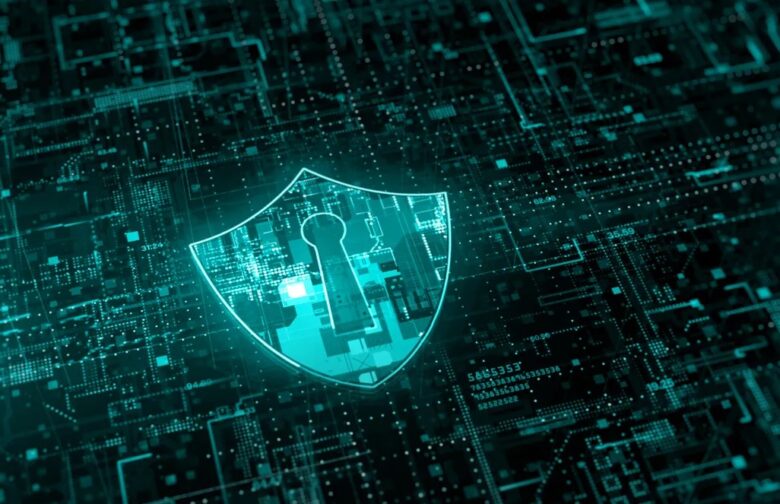The modern work landscape has witnessed a monumental shift with the advent of hybrid work models, blending remote and in-office setups. While this flexibility revolutionizes productivity, it introduces multifaceted challenges to network security.
Safeguarding sensitive data and systems in such a dynamic environment demands innovative strategies and robust measures.
Understanding the Dynamics of Hybrid Work Environments

Source: post.parliament.uk
Hybrid work models, which seamlessly blend remote and office-based work structures, have undeniably emerged as the norm in contemporary workplaces. This transformative model not only ushers in an era of flexibility and work-life balance but also introduces many challenges that are intricately interwoven with the domain of network security.
The primary challenge that stands out is the need to secure the many entry points through which employees access company networks, given their diverse endpoints and locations.
In a hybrid work model, the conventional notions of office-bound employees operating within the confines of a secure corporate network have been upended.
Today’s workforce operates from an array of endpoints, ranging from home computers and laptops to mobile devices, each accessing the company’s network from various locations, both remote and on-premises.
The expansive diversity of these access points amplifies the complexity of securing the network infrastructure, as it must contend with a dynamic landscape that transcends the traditional office perimeter.
With this evolving landscape comes the challenge of ensuring that the data and systems vital to the organization’s operations remain safeguarded. The intricacy of this task is compounded by the fact that cyber threats, which have grown increasingly sophisticated and relentless, now find a broader attack surface to exploit.
As a result, network security strategies must evolve in lockstep, adopting innovative measures to counter the evolving threat landscape while preserving the inherent benefits of hybrid work environments.
Key Security Challenges in Hybrid Work Environments
The expansion of remote devices and diverse networks amplifies vulnerabilities, leading to increased risks of cyber threats and data breaches. Endpoint security risks, data privacy concerns, and managing diverse devices and networks exacerbate the complexities of network security in hybrid setups.
Cybercriminals find new opportunities to exploit weaknesses in this expanded attack surface.
Strategies for Fortifying Network Security

Source: fotolog.com
To combat these challenges, organizations must adopt a multi-layered approach to network security.
Implementing multi-factor authentication (MFA), embracing the principles of zero trust, encrypting data, and ensuring regular security audits and updates are essential practices as these strategies create robust barriers against the many evolving threats.
Role of Private Cloud in Strengthening Security
The private cloud emerges as a game-changer in fortifying network security within hybrid environments as explained by experts from Gigamon. Offering dedicated infrastructure and controlled access, the private cloud provides a secure and centralized platform for data storage and application hosting.
Its integration empowers organizations to bolster security measures while maintaining scalability and flexibility.
Addressing Remote Access Challenges
In a hybrid work environment, securing remote connections is paramount. Implementing virtual private networks (VPNs) and secure remote desktop protocols ensures encrypted communication channels between remote devices and the corporate network.
This added layer of protection prevents unauthorized access and data interception, mitigating risks associated with remote connections.
Continuous Threat Intelligence and Response
Adopting a proactive stance in threat intelligence and response is crucial. Continuous monitoring and analysis of network traffic patterns, along with threat intelligence feeds, enable organizations to identify potential threats in real-time.
Implementing rapid incident response protocols ensures swift action against any detected anomalies or network breaches.
By staying ahead of emerging threats, organizations can significantly reduce the impact of potential incidents.
Enhancing Employee Awareness and Training
In a hybrid work setup, employees serve as the first line of defense against security breaches. Regular training sessions on cybersecurity best practices, emphasizing the importance of data protection, and creating a security-conscious culture among employees are pivotal.
Empowering employees to identify and report suspicious activities or potential threats strengthens the overall security posture of the organization.
Secure Data Backup and Recovery Strategies

Source: blog.quest.com
Ensuring robust data backup and recovery mechanisms are critical components of a comprehensive security strategy. Embracing resilient backup solutions, preferably offsite or cloud-based, safeguards against data loss due to cyber attacks, system failures, or human error.
Regular testing of backup and recovery procedures ensures their efficacy in restoring data swiftly in the event of an incident.
Compliance and Regulatory Adherence
Maintaining compliance with industry-specific regulations and standards is imperative for organizations operating in hybrid work environments. Adhering to frameworks such as GDPR, HIPAA, or PCI DSS ensures data protection and privacy.
Regular audits and assessments validate compliance, ensuring that the organization meets the necessary security and privacy requirements mandated by regulatory bodies.
Best Practices for Leveraging Private Cloud Security
Within the private cloud infrastructure, data encryption, access control measures, continuous monitoring, and proactive threat detection mechanisms are paramount. Regular updates and patch management ensure the system’s resilience against vulnerabilities.
Educating employees about the importance of adhering to private cloud security protocols becomes imperative.
Mitigating Risks Through Policy and Compliance Measures
Developing comprehensive security policies aligned with industry regulations and standards is critical. Ensuring employees are well-versed in security protocols and guidelines mitigates risks. Compliance measures and continuous training contribute significantly to a fortified security posture.
Integration of Advanced Technologies for Enhanced Security
Leveraging advanced technologies such as AI-driven threat detection, automation in incident response, and Secure Access Service Edge (SASE) solutions further strengthens security in hybrid work environments. These technologies offer proactive measures against sophisticated cyber threats.
Collaborative Efforts and Vendor Partnerships
Encouraging collaboration between IT departments and employees, forming strategic partnerships with security solution providers, and fostering open communication channels for security concerns create a collective and proactive approach toward mitigating risks.
Conclusion

Source: en.uniquecare.it
The hybrid work model is here to stay, enhancing the workplace. Ensuring network security in this environment demands a comprehensive approach that combines innovative technologies, stringent policies, and leveraging solutions like the private cloud.
Continuous adaptation and investment in robust security measures will be pivotal in navigating the complexities of this evolving work landscape, ensuring data integrity and a secure work environment.




